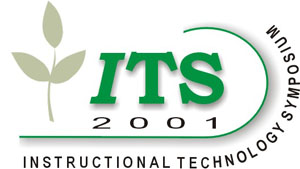Introduction DPV is a suite of software for research and teaching in plant virology developed at IACR-Rothamsted in association with the Scottish Crop Research Institute (SCRI). It is currently available as a CD-ROM for use with WindowsTM (version 3.1 or later) produced and marketed by the Association of Applied Biologists (AAB). It incorporates 354 descriptions of individual viruses or virus groups that were originally published in paper format between 1970 and 1989 by the AAB but with much additional information, interactive sequence displays, some new descriptions and improved images. Following its launch at the ICPP in Edinburgh in 1998, updates have been made available as downloads from the product web site. The description below explains the features of the latest version and plans for future development.Virus Descriptions Commonwealth Mycological Institute and AAB began publication of Descriptions of Plant Viruses in June 1970, when the first set (Descriptions 1-20) appeared under the editorship of Drs A. Gibbs, B. D. Harrison and A. F. Murant. A total of 354 descriptions were published up to December 1989. The AAB became sole publishers from set 19 (Description 296, September 1985). The present software contains all 354 descriptions originally issued imported into a computer database and displayed as web pages. This allows users to search and display the descriptions more easily than the old paper format. The original format of the descriptions has been kept as much as possible, but hypertext links have been introduced, e.g. for DPVs, figures and references, so that relevant data can be accessed more easily. The text of these descriptions has not changed, except to correct typographical errors and to complete references to papers in press at the time of publication. Usually, the original figures are also supplied but in many cases their quality has been improved by electronic scanning of the original photographs or by replacing them with colour equivalents where possible. Line drawings have also been enhanced. In addition, there are 23 entirely new descriptions edited by H. Barker, A. T. Jones, A. F. Murant, and D. J. Robinson (SCRI). All descriptions are written by researchers and experts in their field and contain much valuable information. The software allows users to print out the descriptions and figures. The software also provides ready access to up-to-date taxonomic, genomic and sequence information in related databases. Students and researchers can use this as a resource to examine almost every aspect of a virus from its distribution, host-range, symptoms (with colour pictures where available), taxonomic classification, particle structure (including electron micrographs), serology, genome maps, and sequences with interactive feature maps which facilitate the extraction of sequence features (e.g. coat proteins) for analysis. Up to date taxonomy The software includes a comprehensive listing of all plant viruses, satellites and viroids, classified by families and genera. Alternative spellings, synonyms and strain names are also included and there are search facilities to help the user locate species easily. The taxonomic arrangement is based on that of the Seventh Report of the International Committee on Taxonomy of Viruses (ICTV) and includes the acronyms recommended by them. Notes A short description of each family and genus is provided, emphasising their taxonomic position and genome organisation, and there are quick links to representative genome maps and electron micrographs for each genus. Classified sequence list A list of all (4700+) plant virus, satellite and viroid sequences in the EMBL and Genbank sequence databases is provided, classified by current species name. This provides a rapid way of finding the accession numbers for all the sequences of any virus, or group of viruses. Interactive sequence display All the complete plant virus (or virus segment) sequences that are available are provided, together with some significant partial sequences, making a total of well over 1250 sequences available for immediate use. Associated files and software display these sequences in graphical format in the DpvMap program. The sequence display enables the nucleotide or derived protein sequence from any open reading frame to be displayed and printed or copied to another WindowsTM program. This interpretative software is invaluable to anyone interested in the analysis of plant virus genomes. The Map program can also be used as a standalone program. The user can modify and save the style of the display and create displays for additional sequences. Future developments Updates to the databases are made available at approximately 3-monthly intervals via the DPV web site and are free of charge to those who have purchased the CD-ROM. These updates principally include revised versions of the classified sequence list to take account of new accessions to EMBL or Genbank and further sequences for interactive display. The next major development will be an online version that we hope to have available to subscribers by September 2001. This should be convenient to the users and incurs the least cost and effort in maintenance and distribution. It can be made available on an annual subscription basis (which should be more attractive than the current CD with its substantial capital cost) and could be accessed by any computer with internet connection (including Macs). A pilot version has demonstrated the feasibility of this approach. New virus descriptions have been commissioned by the editors and we shall continue to provide and enhance the facilities for displaying and examining features of sequences. End
|
